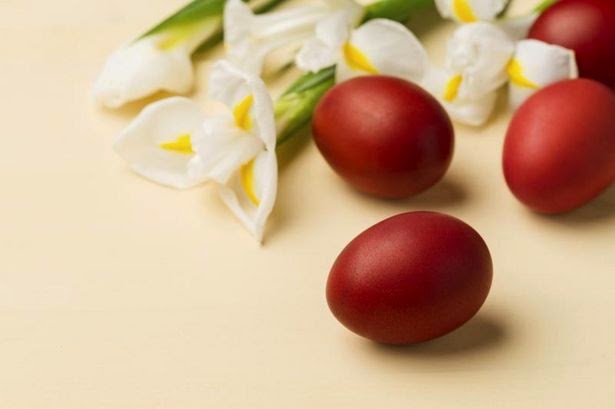Introduce to your children an activity illustrating
the way we worship and more importantly,
why we worship the way we do in the Orthodox Church. Below are some talking points for the lesson, as well as a coordinating activity or craft.
1. When we enter the Church, we try to leave behind the cares of the world. School, Homework, Chores, Tomorrow, What's for dinner....etc.
![]()
![]()
Beginning in the Nave (like a boat in the "Navy") we travel closer and closer to God during the service, moving towards Paradise, which is represented by the Holy Altar, ultimately receiving the Eucharist just at Paradise's doors.
2. Each week, we worship the same way and celebrate the Divine Liturgy of St John Chrysostom from the 5th century. The word
"liturgia" literally means
"work of the people." By attending the Divine Liturgy, we are choosing to give back this time to God. This is our "work." We offer our gifts to Him - our time, our attention, our prayers, our voices. and more tangibly the wine and bread, made with our own hands from the very gifts that God has given us - grapes and wheat. We become co-workers in God's activity.
3. Everyone in the "Ekklesia" is united by a common Orthdoox baptism and confession of faith. We are one created family, surrounded with the Angels and Saints in heaven. Those in the world, the Church militant or army in spiritual battle, mirror the same actions in heaven by the Church Triumphant, the Saints who have already passed the test of life on Earth! We worship God in the Orthodox Church with all of our senses in order to fully participate with our mind, body and soul.
Activity - Ask the children to correctly match the ways we worship God with our senses- if possible, they can make the drawings themselves on colored paper, or you can cut and paste from pictures
- Ears - We hear the word of God in the Gospel and Epistles readings
- Voices - We chant the praises of the angels
- Hands- We form the sign of the life-giving Cross
- Nose - We smell the incense as an offering of our prayer rising to heaven
- Body - We bow our heads, bend to the ground and kneel to worship God
- Eyes - We see the light of Christ in every candle and focus our prayers to the windows of heaven, the icons.
- Mouth- We taste the very Body and Blood of Christ, the blessed five loaves of artoclasia, wine & oil, the blessed boiled wheat kollyva, and/or the blessed antidoro or dismissal bread, and blessed grapes at the feast of the Transfiguration.
4. Lastly, let us not forget that the Divine Liturgy is for the whole world, and through this special service, God helps and saves His creation. We not only say prayers for the weather, for our food and crops, for our protection from danger and for a faithful life, but we pray for the
"peace of the whole world." Although our local Church may not offer a Divine Liturgy everyday, don't forget that in monasteries around the world, the Divine Liturgy is being offered daily, without stop, as a constant prayer to God.
"A Russian priest was speaking with a minister of another denomination one day. The later spoke at great length about all the wonderful things that his church did for the poor and the environment through service projects, soup kitchens, volunteering, and the likes. Then he asked the Russian priest what the Orthodox people do? And the Russian priest paused quietly for a moment, and simply responded, we offer the Divine Liturgy on behalf of the whole world."



































